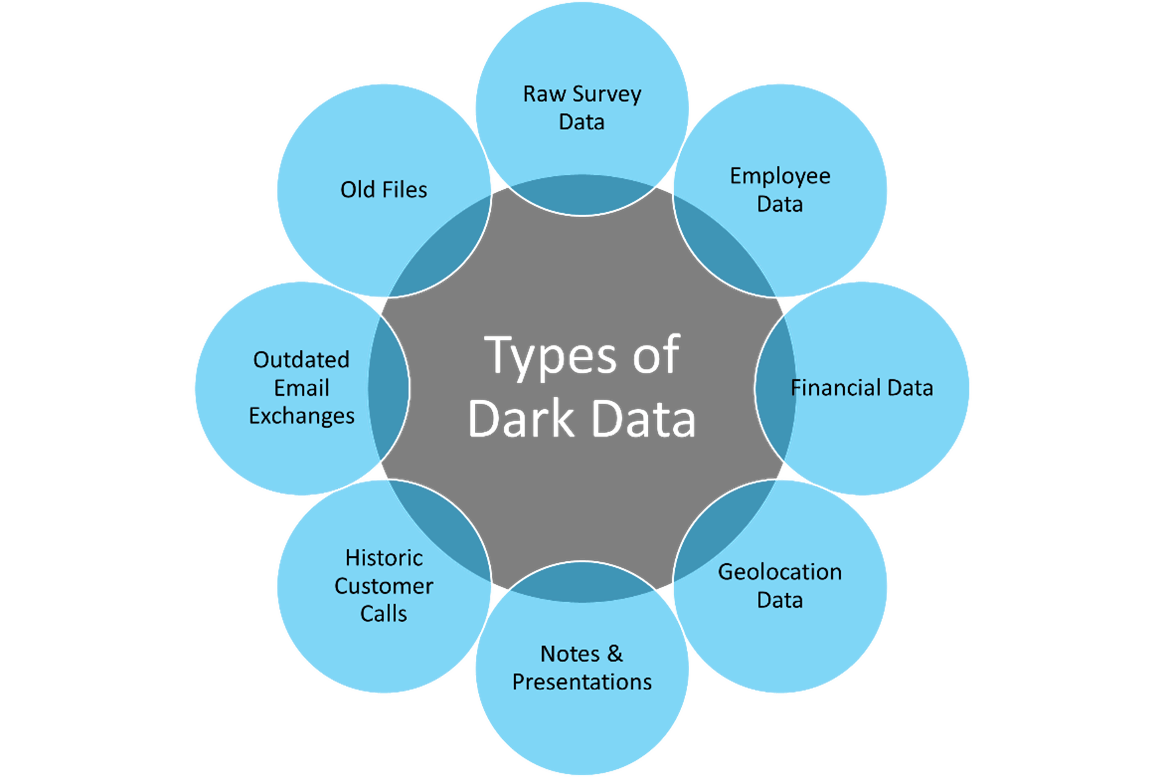
If you are like most companies, your data is collecting dust – and a lot of it. 73% to 90% of organizational data is dark and unmanaged. To most, these stats are surprising and should get the alarm bells ringing. Yet, this is just the beginning of the problem.
Dark Data on The Rise
The IDC states, "The volume of data stored in the Global Storage Sphere is doubling approximately every four years." And most of it is dark. Such dark data comes with many headaches as it becomes a liability under litigation. It also usually contains private and sensitive information. And it is costly to store and upkeep.
However, businesses are usually unaware of its presence since most of it is generated outside of the organization's control. For example, outdated email exchanges, historic customer calls, notes, and presentations usually become dark data. Even recent data can become dark data if unused.

And that is the key here – unused. The same dark data can become your most valuable asset through unstructured data analytics. Yet, many are not able to take advantage of analytics to manage and realize the full potential of their organization's data. The most common cause of this obstacle is the format issue. Since analytics solutions only accept specific data formats and lack visibility, companies cannot use what they cannot find.
However, it's not impossible. Some businesses have effectively tapped into these vast icebergs of information lurking beneath the surface with in-place file management. Here's how.
Success Story
For instance, a financial services company required improved visibility and control over its dark data. They had been collecting data for years that had either become useless or outdated. Upon survey, the company found that their unmanaged data mainly consisted of videos, unorganized and unclassified documents, and other unstructured sources. The company understood that unmanaged data could lead to regulatory penalties, lawsuits, fines, security issues, and operational problems.
Furthermore, a data breach might result in personal or sensitive information disclosure. Mismanagement of this data might also potentially result in the failure of mission-critical systems. Hence, the company decided to pursue in-place data management. Watch the video below to learn more about in-place data management.
Upon the completion of the project, 4.5 million gigabytes of data were analyzed, over 200,000 documents were categorized, and over 1 million gigabytes of data were remediated. Furthermore, the data management rules and procedures were put in place with the help of the IT and compliance departments.
Final Words
That was a small financial services company. A corporate behemoth may be sitting on petabytes of dark data, utterly oblivious of its existence and threats. Hence, it is critical to act immediately on your dark data and either lose or use it. Contact our specialists for more information on how to clean up your data.
Related Posts
Additional Resources
Goals While Assigning Retention Policies
Exploring strategic approach to goal setting in retention policies, adding tangible value to your company’s data management. Here is a…...
Challenges Managing Dark & Unstructured Data
Discover the complexities and risks associated with Managing Dark & Unstructured data....
DoD 5015.02 Classified Records Management
This national agency implemented ZL Tech Classified Record Management to handle their high impact documents. ZL’s unified architecture allowed them…...


